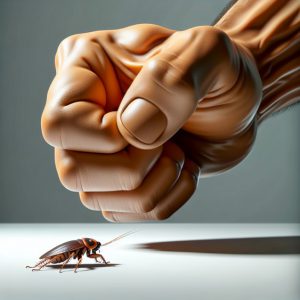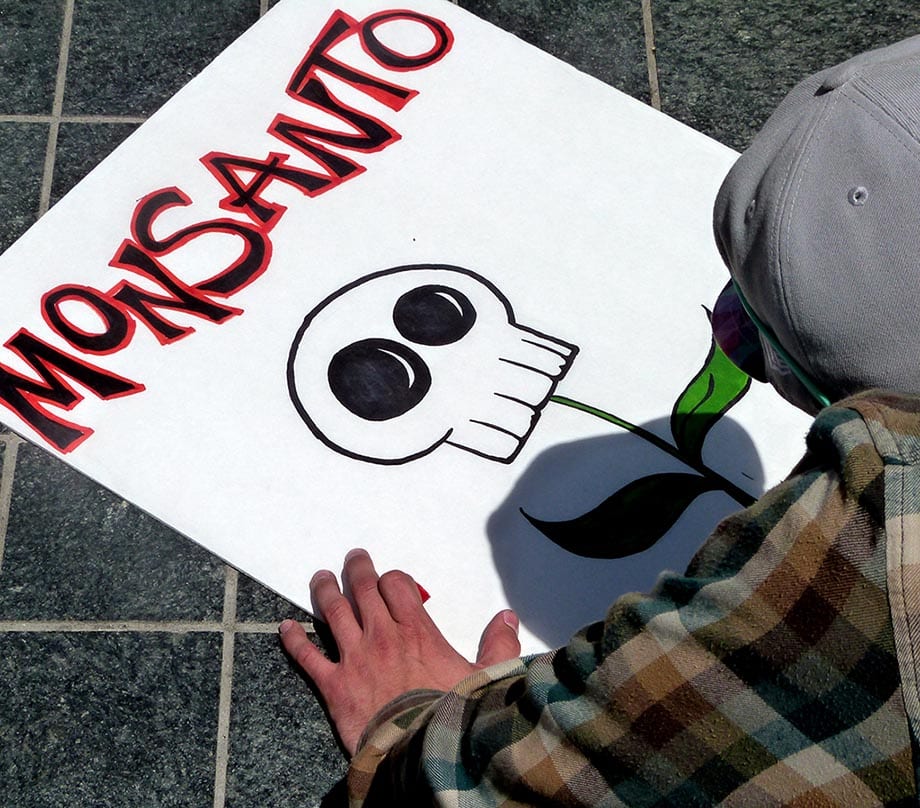GMO: Germans Eating Healthy Again?
Updated Aug 2023
Many countries are in a deep battle to decide whether to allow or prohibit Genetically Modified Organisms (GMO). The government has been in a heated debate over a possible ban in Russia for months. China has rejected US shipments of corn for containing illegal GMO corn from Syngenta. Brazil is moving away from GMO soybean cultivation to certified non-GMO soya. India is also in a heated governmental battle over GMOs.
In February this year, the German Poultry Association (Zentralverband der Deutschen Geflügelwirtschaft e.V. or ZDG) unilaterally declared that it was stopping using GMO-free animal feed, following similar moves by other associations in England and Denmark. They claimed a worldwide shortage of certified GMO-free soya, a prime component in industrial chicken feed today. It turns out that was a lie clearly to the interest of the world’s largest patented GMO soya seed purveyor, Monsanto, who dominates USA and Argentina GMO soya cultivation.
However, there have been some positive developments recently. According to a study published last month in the journal Nature Food, non-GMO soybean cultivation is on the rise in Germany. Farmers report being able to get a premium price for their non-GMO soybeans from buyers who want to avoid GMOs. Exports of German non-GMO soybeans to other European countries have also increased over the past year.
This shows that consumer demand for non-GMO foods remains strong, even as large agricultural groups try to push GMO cultivation. Germans increasingly want to know what is in their food and where it originates. If non-GMO soybean farming in Germany continues to grow, it could help reduce Europe’s dependence on imported GMO soybeans from Monsanto and promote local, sustainable agriculture. The small victory for non-GMO soybeans may signal positive changes in Germany’s food system.
Battle lines are drawn.
At the end of August, battle lines were becoming clearly defined in a war for Germany and, in reality, global food security. At the end of August, a group of the most potent German supermarkets demanded the German Poultry Association (ZDG) to stop using GMO feed for egg and poultry meat production starting January 1st, 2015. In early December, Germany’s largest poultry producer, Weisenhof, based in Lower Saxony, raised the white flag of surrender and announced that it would return to using GMO-free animal feed due to “consumer demand.” Alexander Hissting of VLOG (Association of Food without Genetic Engineering) told the German Der Spiegel: “We expect an almost complete return of the poultry meat industry to GMO-free production in the coming months.”
A group of Germany’s leading Supermarket groups, not content with the ZDG explanation, had consulted the Brazilian soybean producers following the claim by ZDG. The supermarkets found they had been lied to by the poultry association. The reason the ZDG gave for not continuing GMO-free soya feeding was not the case. The system clearly has enough Brazilian GMO-free feed to supply Europe’s needs.
The battle over GMOs continues today. According to a recent report from Greenpeace Germany, about three-quarters of soybeans imported into the EU from South America still contain GMOs. However, demand for non-GMO and organic foods remains strong in Germany. Several major supermarket chains, including REWE and Edeka, have set targets to increase their offerings of non-GMO and organic private-label brands in the coming years. The fight to give consumers transparent non-GMO options goes on. Full Story
Unmasking Monsanto: The Winds of Change in Agriculture
Prepare for a revelation, for the winds of change are stirring, and the truth about Monsanto’s stranglehold on natural agriculture will be exposed. Monsanto, often perceived as a monstrous machine, has relentlessly pursued to dominate agricultural production. Their GMO seeds, touted as revolutionary, have failed to deliver better-quality yields and, alarmingly, demand higher quantities of toxic pesticides. What they promised as “more for less” has left the average person with less and an empty pocket.
The extent of their power to coerce conventional farmers into submission is nothing short of terrifying. They engage in protracted battles, depleting resources until surrender becomes the only option. But take heart, for change is on the horizon.
Monsanto’s control over both seeds and toxic chemicals ensures perpetual dependence. Farmers cannot store their seeds; they must rely on Monsanto’s supply chain. However, a glimmer of hope emerged from Russia, where the resistance began. Russia took a bold stance, telling Monsanto to pack up and take their toxic products with them.
As the winds of change gather momentum, Monsanto’s grip on agriculture will weaken, and the power it once wielded will vanish as swiftly as it came.
Debunking Myth #1: Unproven Harmful Effects of GMOs on Humans
Monsanto’s advocates have repeatedly asserted, akin to the propaganda tactics of Joseph Goebbels, that genetically modified organisms (GMOs) have never been definitively proven to be harmful to people. They seem to believe that incessantly repeating this claim with unwavering conviction will eventually be accepted as the undeniable truth.
However, the truth contradicts this narrative. Many outcomes associated with a GMO diet, supported by peer-reviewed studies, paint a different picture. These outcomes include the development of grotesque tumours, premature death, organ failure, gastric lesions, liver damage, kidney damage, severe allergic reactions, and a viral gene that disrupts human biological functions.
Debunking Myth #2: GMO Crops as the Sole Solution to World Hunger
One prevailing argument favouring GMO crops asserts that these genetically modified varieties represent the only path to addressing global hunger. Advocates suggest that without GMOs, the next decade could see millions succumbing to starvation. In the narrative of biotechnology, GMOs stand as the ultimate solution to the world’s hunger crisis. Opposing GMO technology can often lead to being branded as a heartless elitist, with the blame for suffering children in any third-world country placed squarely at one’s feet.
However, the reality paints a different picture: Sustainable agricultural practices are key to resolving world hunger. GMO farming practices, on the other hand, lack sustainability. Farmers who cultivate GMOs face the hurdle of being unable to save their seeds from one year to the next due to patent restrictions and decreased seed fertility. Consequently, after experiencing a successful first harvest, they find themselves compelled to repurchase seeds the following year. This cycle plunges them into perpetual debt, leading to dire financial crises akin to the Bt Cotton scandal in India. Tragically, this crisis resulted in an Indian farmer taking their own life every half hour, ensnared by Monsanto’s debt web. The toll was staggering, with over a quarter of a million farmers losing their lives to suicide before the country eventually banned the sale of Bt cotton seeds.
Myth #3: GMOs and Reduced Pesticide Use – Unveiling the Truth
Monsanto asserts that their Bt products, genetically engineered to produce a protein toxic to certain insect larvae, necessitate less pesticide spraying, as boldly proclaimed on their website. According to their statement, Bt proteins have a history of safe and effective use in conventional and organic agriculture through topical sprays. Genetically modified crops carrying the Bt trait purportedly empower farmers to safeguard their crops while minimizing or even eliminating the need for pesticide application.
However, even for industry giants like Monsanto, reality often diverges from intentions. As reported by The Cornucopia Institute, initial years may have seen a reduction in pesticide and herbicide usage, but this trend took an unexpected turn. The subsequent years witnessed a dramatic upswing in the use of these chemicals, resulting in substantial profits for the very producers of these substances – notably, Monsanto and other biotech companies responsible for the engineered seeds.
A recent study, unveiled by Food & Water Watch underscores that the anticipated goal of reduced chemical reliance has not materialized as envisioned. In fact, according to data from the USDA and EPA incorporated into the report, farmers’ rapid adoption of genetically engineered crops in the United States has led to an increase in herbicide use over the past nine years. This report aligns with another study by Charles Benbrook, a research professor at Washington State University, which reached similar conclusions in the preceding year.
Myth #4: GMO Technology vs. Ancestral Cross-Breeding of Crops
Let’s dissect a patronizing assertion straight from the Monsanto website, where they claim that nearly everything you and your ancestors consumed has been genetically modified, emphasizing that humanity has been selectively breeding plants and animals for over 10,000 years. They highlight the vast transformations from the wild Aurochs to modern cattle and from teosinte to today’s corn.
However, the reality is quite distinct. What our ancestors and responsible farmers practised was cross-pollination among different varieties of the same plant, a low-tech method that can occur naturally. They assisted in this process to bring out desirable traits, such as combining drought resistance with shorter growing seasons. This is known as selective breeding.
In stark contrast, genetically modifying seeds represents an entirely different realm. GMO seeds are crafted within a laboratory using sophisticated techniques like gene splicing. Unlike hybrid seeds, GMOs often cross biological kingdoms, such as merging bacterial genes with plants. For instance, Monsanto developed Bt Corn, where the genetic material from a bacteria, Bacillus thuringiensis, was incorporated to make the plant pest-resistant, effectively turning every cell into a pesticide.
Furthermore, biotech companies can introduce “terminator technology,” rendering seeds sterile and preventing their reuse. Although claiming not to employ this technology, Monsanto holds patents for it, leaving farmers reliant on annual seed purchases and fostering a continuous income stream for biotech corporations. This dependence is reinforced through contracts and patents, maintaining their dominance in the industry.
Notably, its close ties to the U.S. government have facilitated Monsanto’s success in legal battles. Executives from the company have held influential positions in multiple administrations, raising concerns about conflicts of interest and their impact on regulatory decisions. When powerful interests intertwine, accountability often wanes, allowing these entities to operate with relative impunity. full story
Only four of the ten reasons have been highlighted here; for the complete list, please visit the website provided above. It promises to be an engaging and enlightening read.
Regarding anything associated with Monsanto, the consensus seems to be that it’s either wrong, dangerous or a troubling combination of both. To safeguard your health, you should be vigilant about what you consume and abstain from GMOs. Additionally, consider voicing your concerns to your local supermarket, as consumer awareness and action can drive change.
Interestingly, the BRIC nations are awakening to the perils of GMO foods faster than many developed countries. With countries like Russia taking decisive steps, one can hope they all follow suit and sever ties with Monsanto. Monsanto’s grand ambition of controlling the world’s seeds may face increasing resistance as the tide turns against them.
Twenty-Six Countries Ban GMOs—Why Won’t the US?
The Nation and Foreign Policy In Focus are pleased to announce a new partnership to promote a more progressive US foreign policy. The Nation will post several FPIF articles on its website each week to provide greater visibility to progressive voices worldwide. Complementing The Nation’s coverage of domestic and world events, the FPIF articles will provide an in-depth analysis of the issues that demand greater public and policymaking attention, such as global military spending, climate change, human rights campaigns, economic inequality and ongoing conflicts in Syria, Afghanistan and elsewhere.
The Nation/FPIF coverage will also highlight concrete alternatives that can make the world more peaceful, just and sustainable. Foreign Policy In Focus is a project of the Institute for Policy Studies, which is celebrating its fiftieth anniversary in 201Full Story
Other Articles of Interest:

How To Get Financial Freedom: Escape the Herd for Lasting Success

Legalized Food Poisoning: America’s Toxic Diet by Design

“””Investing for dummies”””: Follow The Trend

Executive Compensation Driving Share Buybacks

Illusions of Economic Recovery: Negative Interest Rate Controversy

Mastering the Trading Range: Unlocking the Potential for Explosive Gains

The Golden Symphony: Unveiling the Dynamics of the Gold to Silver Ratio

Inside the Market Psychology Cycle: Unveiling Trends and Tactics

South China Sea Showdown: Intensifying Heat on the Horizon

Will the Stock Market Crash: Analyzing Possibilities and Implications

China Quantitative Easing: Battling Economic Slowdown

What is Data Manipulation: The Dark Side?

Corruption in China: Government’s Aggressive Crackdown on Wrongdoings

These Are The Things That Scare Americans The Most

Exotic Art: The Fusion of Art and AI Brilliance



